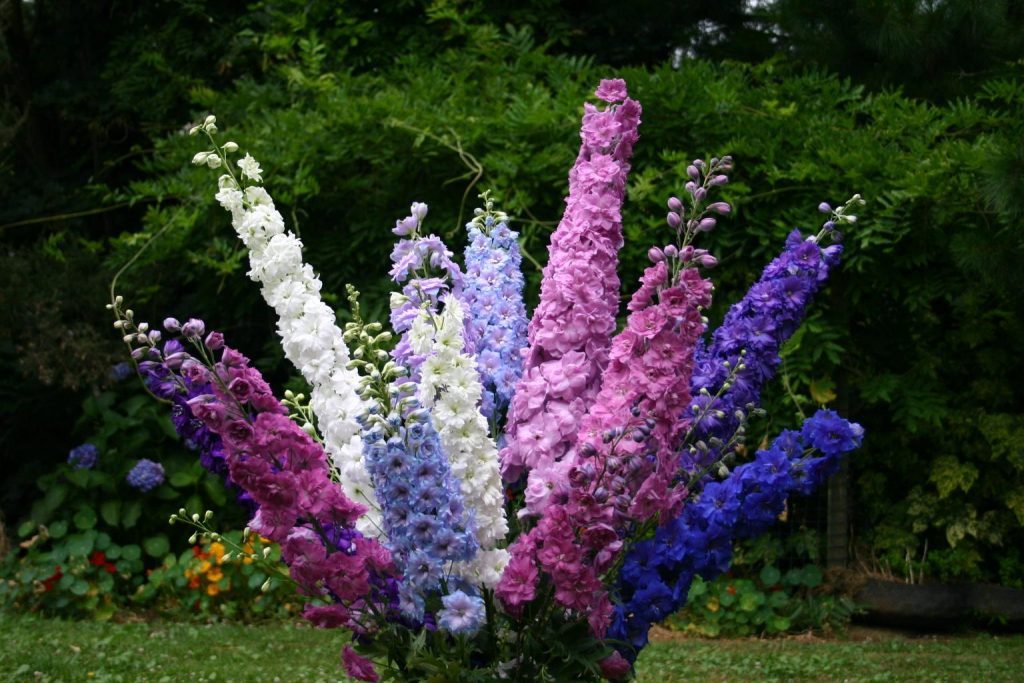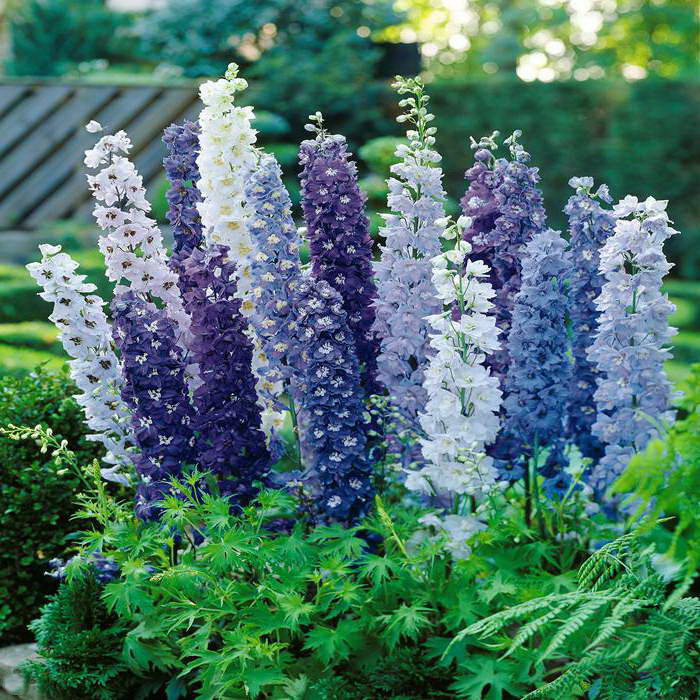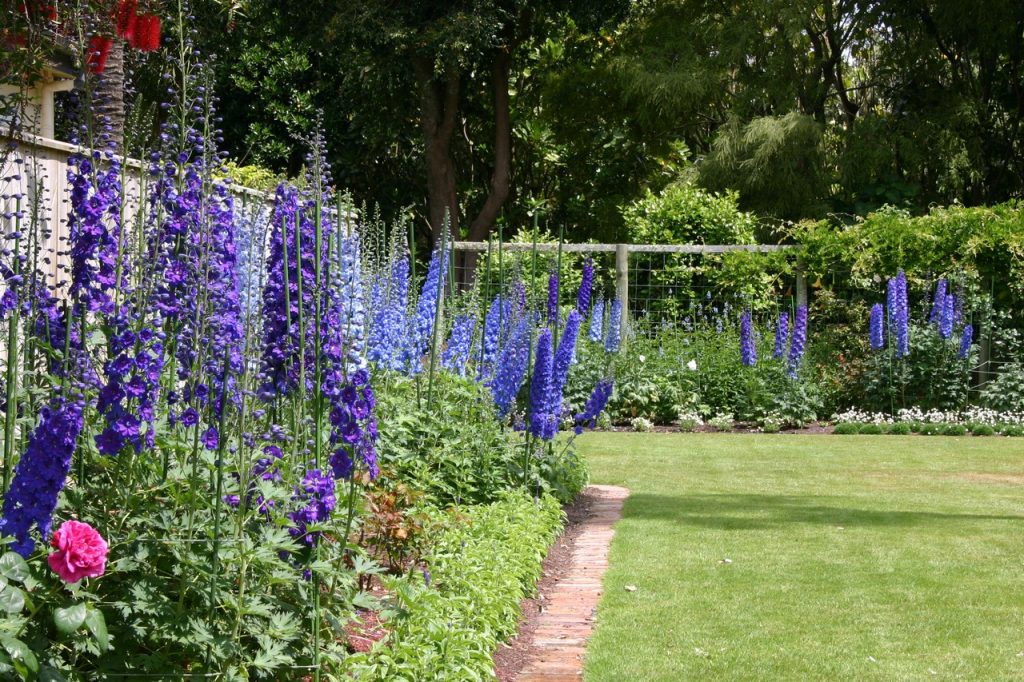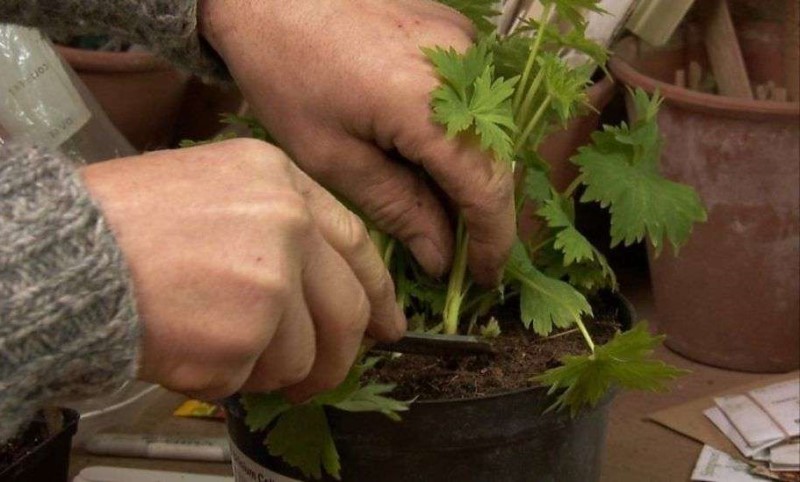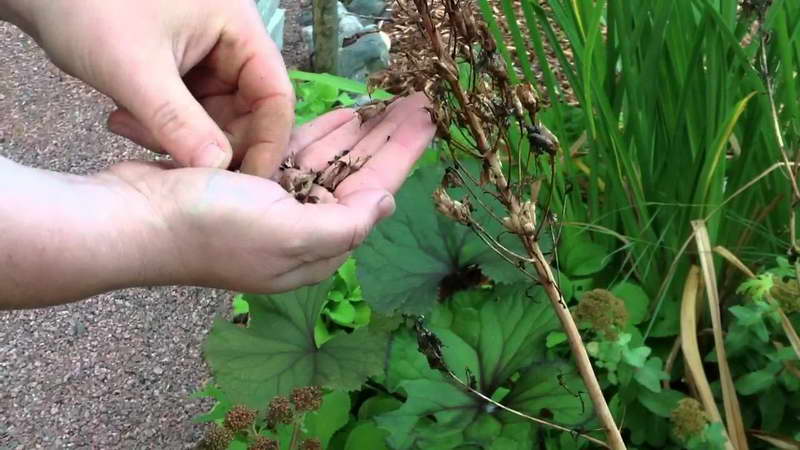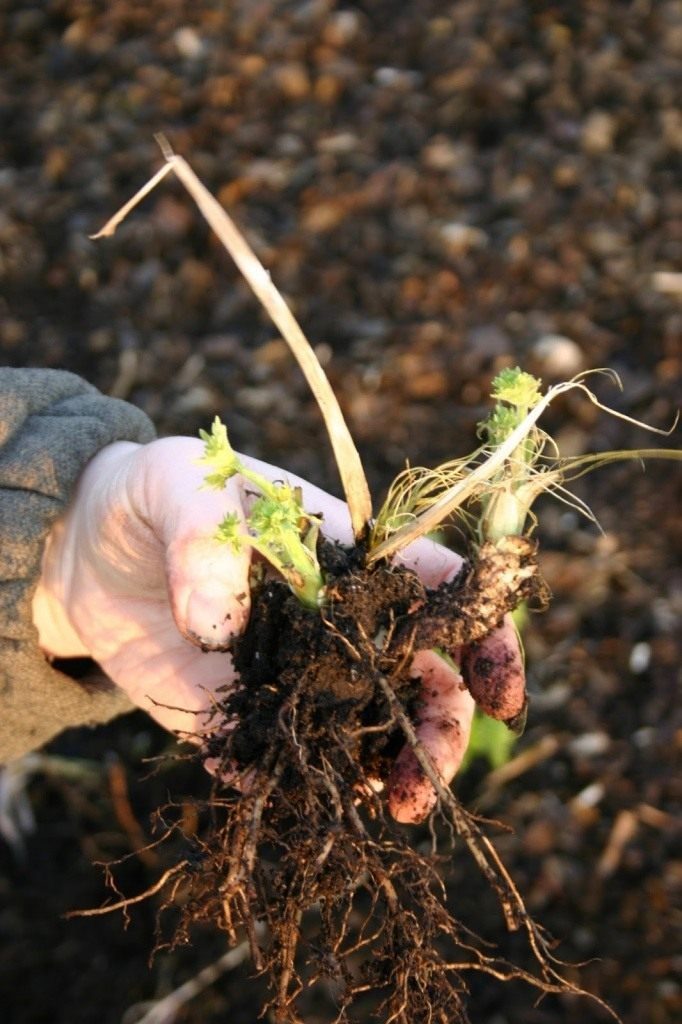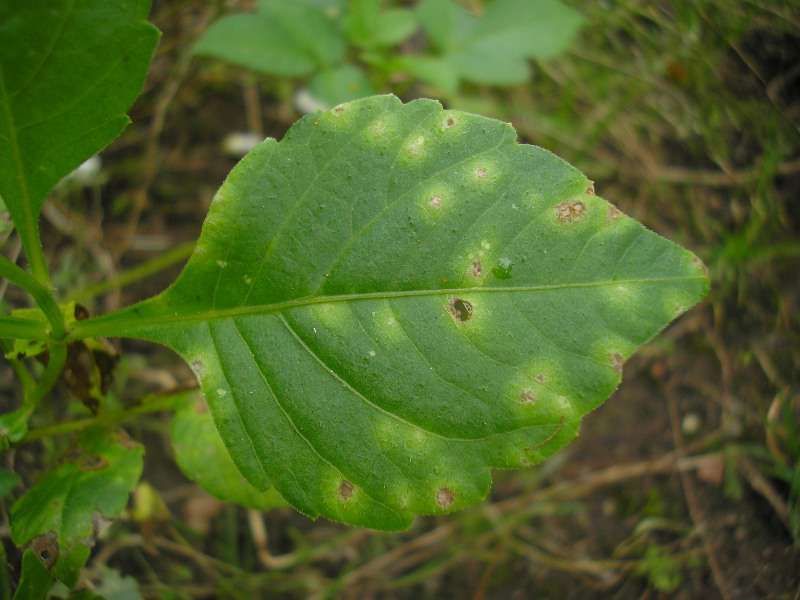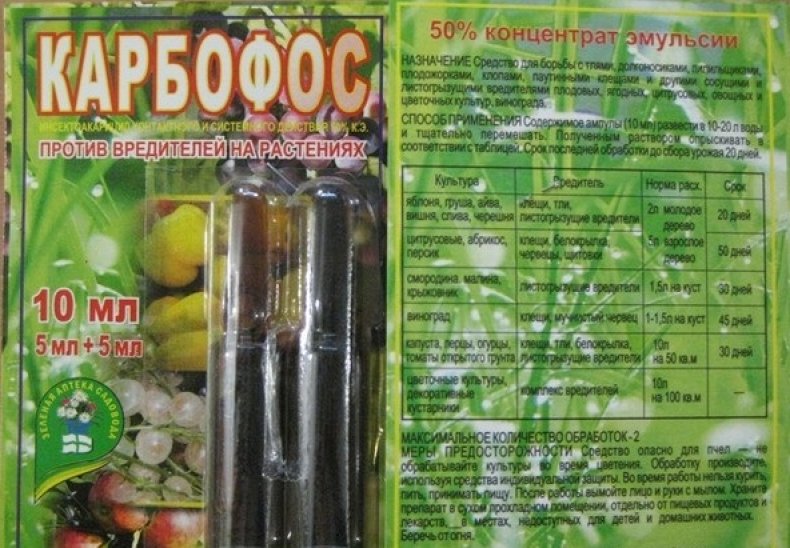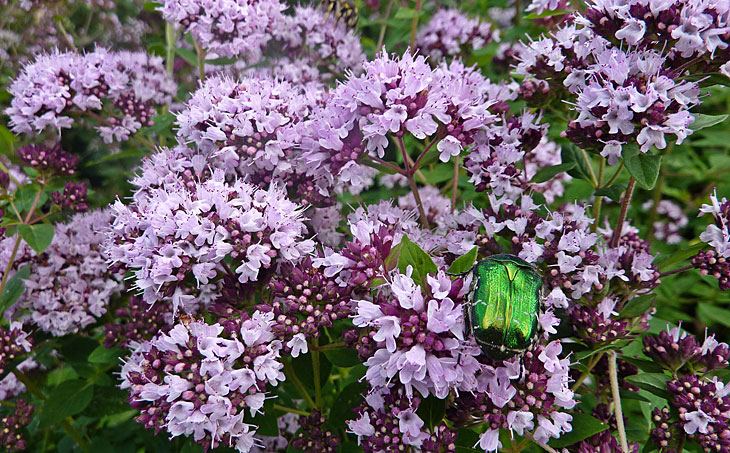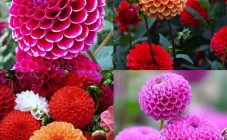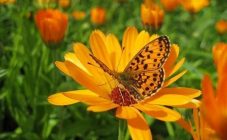Content:
Delphinium got its name from the flower shape. Ancient Greek scientists discovered healing properties in the plant. The Russians call the delphinium "spur", the French - "lark legs", the British - "funny spurs", the inhabitants of Germany - "knightly spurs". Planting a giant delphinium does not cause difficulties and even a beginner grower can do it, the main thing is to find out what the plant likes.
General rules for caring for a delphinium in the open field
Delphinium is a very tall flower, it can reach a height of 1.5 meters. The stem of the plant is hollow inside, this can cause even a weak gust of wind to break the fragile plant. Therefore, you need to choose the right place for growing delphinium in the country, preferably in the open sun.
Planting is carried out in fertile soil with neutral acidity. Watering is needed rare, but abundant. For good flowering, it is necessary to make fertilizing several times per season. Delphinium care should include pruning and a garter to avoid stem breakage. When the plant rises to a height of 60 cm, the first garter is recommended.
Hard materials and synthetic threads can damage the fragile stem, so it is better to use strips of soft cloth for tying.
Delphinium: planting and care in the open field
You can admire the beauty of flowers only if the place and soil are correctly selected for growing the delphinium. Good growth and abundant flowering cannot be achieved when planted in highly acidic soil. The plant prefers the neutral reaction of fertile soil and does not like acidic soil. If the soil is predominantly acidic on the site, you need to start preparing it in the fall. It is recommended to add 100 g of dolomite flour or lime per 1 m2. In addition, a nitrogen-containing fertilizer - manure - must be added to the soil in order to enrich it with nutrients.
You need to grow a flower in an area closed from the winds. It is advisable to plant in an open, sunny place, since the New Zealand perennial needs bright lighting. Sometimes in the midday heat, flowers can fade.
Perennial delphinium: landing
Freshly harvested seeds give 100% germination, the seed of the last year or sowing material 3 years ago can lose germination by 50%. After harvesting, the seeds must be sown directly on the garden bed or in containers. The optimal period is October, November, in accordance with the lunar calendar. When sowing in spring, it is recommended to carry out preliminary stratification.
When and how to sow delphinium? Seeds are sown on the garden bed in the intended rows, in containers - superficially, after which they are sprinkled with earth.
A beautifully flowering culture propagates by shoots. They are planted in autumn or spring. In the process of vegetative growth during the season, the bushes increase the green mass, therefore, when planting, it is important to observe the distance between the plants, leaving at least 50 cm.
How to plant a delphinium correctly? To plant the shoots, they dig holes, fill them with fertile soil, apply mineral fertilizers, add compost. During planting, they try to deepen the root collar by no more than 2 cm. When the shoots reach a height of 10 cm, the shoots need to be thinned out.
Plant care
Fertilization promotes good growth and flowering of the plant. The first feeding is carried out in the middle of spring. At this time, the delphinium needs nitrogen feeding. They contribute to the growth of green mass. At the beginning of summer, plantings should be fed a second time, during budding. At this stage of development, plants need phosphorus and potassium fertilizers. It is recommended to add some nitrogen fertilization.
Phosphorus-potassium fertilizers are applied after the buds fall. It is not recommended to add nitrogen, as the plantings will endure the winter worse.
In a rainy summer, the delphinium does not need additional watering. During dry periods, it is important to produce moderate soil moisture.
Delphinium care at different times of the year
It is advisable to plant delphiniums in the spring at a pre-prepared place. Plants are planted when the weather is warm and the ground warms up. By the end of April, the threat of return frosts will pass, so you can sow seeds.
If desired, you can carry out autumn sowing, having previously prepared the land. Planting is carried out in the last decade of August or early September.
After the buds have faded, the delphinium requires special care. At this time, you need to trim the main peduncle.
After the end of flowering, planting is recommended to feed with potassium-phosphorus fertilizers.
How to prune: preparing for winter
In autumn, the stems and foliage of plants gradually wither. Delphinium belongs to frost-resistant crops, therefore, does not require additional shelter for the winter, but it needs to be properly pruned.
When cutting off the delphinium, you need to shorten all the stems to a length of 30 cm, cover the places of the cuts with clay. Pruning is carried out for the sake of preserving decorative qualities. During the growing season, the plant produces numerous side shoots. They need to be removed in time, otherwise they will lead to the fact that they will bloom profusely, but the buds will be very small.
It is still recommended to cover young low-growing bushes for the winter with spruce branches or mulch the soil to protect the young root system.
Agrotechnical methods of growing delphinium
When growing a crop, it is important to prune, tie, feed, pinch, and treat pests and diseases on time.
Pruning is done in 2 steps. The first time it is necessary to trim when the stem of the crop reaches 20 cm. Corrective pruning involves the removal of weak shoots. No more than 5 strong stems should be left on the plant. This procedure is necessary so that the plant in the future does not waste its energy on the development of weak shoots. The procedure takes place in May.
The second stage is caring for the plant after flowering. At this time, you need to decide whether you need seeds or not. If you do not set yourself the goal of collecting your own seeds, pruning is carried out immediately after the buds have faded. This will preserve the decorative qualities of the perennial culture.
A tall plant needs a garter. The stem is tied up 3 times per season, each time it reaches a height of 50 cm.Next to the delphinium, you need to install stakes, lean the stem against them and tie it up using a strip of soft fabric.
Seed reproduction
In May, delphinium seeds are sown in open ground. It is necessary to add humus, mineral fertilizers and peat, nitrophosphate, wood ash to the garden bed. After fertilization, the bed is dug to the depth of the shovel bayonet, leveled with a rake, make small longitudinal grooves and watered well. Only after watering is the planting material sown and covered with a small layer of soil.
In order for the seeds to sprout faster, it is recommended to cover the flower bed with a covering material, which is removed after the threat of recurrent frosts disappears. In the summer they take care of the plants, and the next year they are transplanted to a permanent place.
Sowing a mixture of seeds for seedlings in Siberia can be done at home. In March, you need to prepare containers and sow seeds. If the seedlings are developing well, then this year we can wait for the first flowering.
Rhizome division is an easy way to get new specimens of delphinium
How to root a delphinium and which bush to choose? 4-year-old bushes of an ornamental plant are suitable for reproduction. Rhizomes must be removed from the ground, dried and cut into slices with a sharp knife. An incision is made between young buds and shoots. A large rhizome can even be divided into 10 parts, on each of which you need to leave at least 1 bud. When planting divisions in a new place, the same plants bloom in the current season.
Fertilization
It is recommended to apply top dressing only after loosening the soil and preliminary watering, so as not to burn the root system.
- 1 top dressing. Held in April. To prepare the solution in a bucket of water, dissolve 1 tbsp. l. urea, the same amount of superphosphate and potassium sulfate. When watering plants for 1 adult bush, you will need 2 liters of the finished product.
- 2 feeding. It is recommended to feed Agricola-7.
- 3 feeding. In 10 liters of water, you should dilute 2 tbsp. l. fertilizers Effekton-Ts.
Plants are planted in various flower beds. Looks beautiful in the background near the fence itself. Delphinium can be used to decorate low-rise buildings.
Disease and pest control methods
Delphinium can be affected by powdery mildew, black bacterial and annular spot, ramularia of leaf plates.
Ramulariasis of leaf plates
The disease can be detected by the ugly dark brown spots that are located on both sides of the leaves. Over time, the spots spread and merge together. The disease leads to drying out and foliage. Antifungal agents are used to combat.
Powdery mildew
Wet weather contributes to the spread of the disease. The gray-white bloom on the leaves turns brown, the leaves and stems dry and die. For preventive purposes, it is recommended to observe the distance between plantings, you need to remove excess shoots in time. Treatment with Topaz is effective.
Ring spot
On both sides of the foliage, you can see rings of irregular shape, which are colored yellow. In case of a massive defeat, the foliage is completely "decorated" with rusty spots. Some plants will still have to be dug up and discarded. With a weak lesion, it is recommended to treat the plantings with Actellik, Inta-Vir, Karbofos, Aktara.
Black bacterial spot
Various spots are localized on the foliage, differing in shape and size. Affected stems turn brown, gradually dry out and are easy to break. A tetracycline solution is used to combat the disease.
Of the pests, the plant is annoyed by caterpillars, slugs, a delphinium fly. The last insect causes great harm, laying eggs directly in the buds of plants. The larvae eat the stamens and pistils, the plants stop blooming. It is impossible to collect seeds from such a specimen; if they tie, they will quickly crumble.
To combat insect pests, an insecticide solution is used.Removal of slugs is facilitated by mechanical methods: either they are collected by hand, or traps are set.
Experienced flower growers widely use delphinium in landscape compositions. Decorative plantings can be given by planting several varieties of flowering plants with flowers of the most bizarre colors. Delphiniums look beautiful in the background, you can use them to decorate mixborders. Look great in combination with roses, dahlias, in harmony with phlox, rudbeckia, lilies. Planting with some cereals is ideal.
Delphinium flowers, mainly double and semi-double varieties, keep freshness in cut for up to 10 days. Plants with white or blue buds are especially suitable for these purposes.
